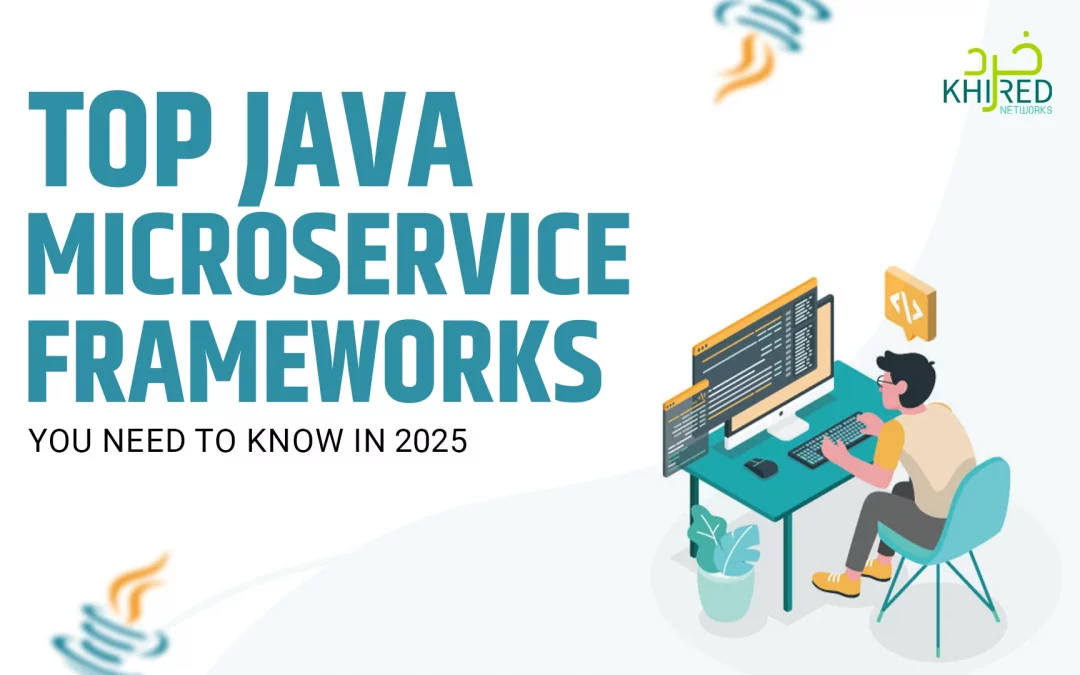In the present world of bespoke software development, new approaches to developing software applications are continuously evolving. One such approach is the microservices architecture.
What is the Microservices Approach?
This approach to software development involves dividing a complex app into a collection of smaller modules. Each module has sufficient functionality to function as an individual working unit. So, when a change is desired, you don’t have to change the entire codebase. Instead, you simply modify the module concerned and implement the change in the codebase.
Several frameworks employ the microservices approach, which is based on different programming languages. This article examines the set of tools and libraries that help developers build microservices using the Java programming language.
Top Java Microservices Frameworks
Let’s have a walk-through on the top Java microservices frameworks that you can use for building scalable apps.
1. Spring Boot
In Java, Spring Boot successfully enjoys the position as one of the most popular frameworks. This toolkit offers several features that help simplify the process of creating stand-alone and almost complete applications. With Spring Boot, developers can quickly set up a project with minimal configuration.
Why Choose Spring Boot?
- Quick Start: Spring Boot’s auto-configuration feature enables developers to get started quickly. You can concentrate on writing code instead of dealing with complicated setup processes.
- Rich Ecosystem: It integrates effortlessly with numerous Spring ecosystem projects, including Spring Cloud, which offers resources for creating cloud-native applications.
- Community Support: With a large community, locating resources, tutorials, and solutions to problems is straightforward.
Key Benefits:
- Rapid development
- Offers automatic configurations
- Comes with embedded servers
- Supports cloud-native applications
- Good testability
Potential Drawbacks:
- Steep learning curve
- Large memory consumption
- Too broad autoconfiguration
- Less mature in AoT and native image
- Not as lightweight as other frameworks
2. Quarkus
Quarkus is an emerging framework designed to position Java as a leading option for Kubernetes and cloud-native settings. It is specifically tailored for the contemporary development landscape.
Why Choose Quarkus?
- Container-First Approach: Quarkus is built with containers in mind, enabling efficient deployment in cloud environments.
- Reactive Programming: It offers built-in support for reactive programming, which is excellent for creating responsive applications capable of handling multiple users at once.
- Developer-Friendly: Quarkus features a live reload capability, which allows developers to see changes in real-time. This significantly speeds up the development process.
Key Benefits:
- Good developer productivity
- Fast boot time
- Low memory consumption
- Simplifies app deployment and management
- Reactive and imperative programming
Potential Drawbacks:
- Comparatively new and not well-known
- Requires large documentation
- Limited extensions
- Potentially steep learning curve
3. Micronaut
Micronaut is a modern framework specifically designed for building modular and easily testable microservices in Java. It is engineered for speed and efficiency, making it an excellent choice for developers seeking a lightweight solution. The framework utilizes ahead-of-time compilation that’s combined with an IoC (Inversion of Control) approach. It’s why apps built in this framework use little memory and start quickly.
Why Choose Micronaut?
- Fast Startup Time: Micronaut applications initialize almost instantly, making them ideal for microservices that must manage numerous requests swiftly.
- Minimal Memory Usage: This framework requires less memory than conventional frameworks, which makes it well-suited for cloud environments with limited resources.
- Built-in Dependency Injection: Micronaut is designed to enable dependency injection at compile-time, which enhances performance and simplifies application maintenance.
Key Benefits:
- Reduced memory consumption
- Very fast startup time
- Early identification of DI errors
- Supports multiple languages
- Easy integration with GraaIVM
Potential Drawbacks:
- Steep learning curve
- Less mature than Spring Boot
- Limited Third-Party Integrations
- Complex configurations for large apps
- Slightly long build process
4. Vert.x
Vert.x is an event-driven framework that enables you to create reactive applications in a polyglot environment, meaning you can use other languages alongside Java. This modular toolkit is ideal for microservice architecture, offering more freedom and flexibility to the app engineers.
Why Choose Vert.x?
- High Performance: Vert.x is built for high concurrency, making it ideal for applications that need to perform well under heavy load.
- Flexibility: Being a polyglot, you can combine various programming languages and libraries based on your needs.
- Event-Driven Architecture: This model enables the development of applications that can swiftly respond to events, enhancing user experience.
Key Benefits:
- Creates scalable microservices
- Supports multiple JVM-based languages
- Lightweight and high performing
- Facilitates inter-component communication
- Is developer-friendly
- Ensures stability
Potential Drawbacks:
- Steep learning curve
- Difficult to debug
- Limited built-in features
- Requires good reactive programming understanding
- Less structured framework
- Smaller ecosystem
5. Dropwizard
Dropwizard is a framework that integrates several reputable libraries, enabling developers to efficiently build RESTful web services. Its standout features are simplicity and effectiveness. This framework strikes a balance between Spring Boot and Micronaut, ensuring maturity and stability. It’s out-of-the-box operational tools and application metrics that allow you to monitor your systems and perform health checks.
Why Choose Dropwizard?
- Minimalist Approach: Dropwizard values convention over configuration, allowing developers to get started effortlessly without unnecessary boilerplate code.
- Integrated Monitoring: It includes built-in metrics and health check features, allowing developers to easily monitor application performance.
- Focus on RESTful APIs: If you’re mainly building RESTful services, Dropwizard provides outstanding tools to simplify this process.
Key Benefits:
- Simple and lightweight
- Fast development
- RESTful API-focused
- Built-in metrics
- Java ecosystem friendly
- Good documentation
Potential Drawbacks:
- Less flexible
- Heavy for simple apps
- Limited reactive support
- Slow startup time
- No built-in dependency injection
- Smaller community
Conclusion
In 2025, Java microservices frameworks are continuously advancing, equipping developers with powerful tools to create scalable, efficient, and resilient applications. Your choice of framework should align with your unique requirements.
Each framework offers distinct advantages, enabling teams to streamline development, improve maintainability, and optimize resource use. As businesses increasingly implement microservices architectures, staying up to date with the different types of saas development frameworks ensures you stay competitive in the dynamic technology landscape.



